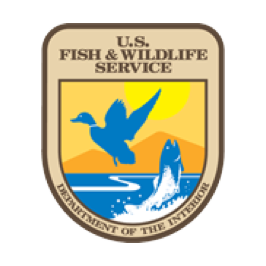Habitat Connectivity
““We have a responsibility to protect wildlife and ensure their survival. Wildlife habitat has been manipulated to suit the needs of human populations. We need to come together to reconnect pieces of isolated habitat to improve the survival rate of wildlife.””
Shailyn MillerNAFWS Wildlife Connectivity Coordinator
WILDLIFE CORRIDORS
Wildlife corridors are connections across the landscape from one habitat patch to another. Natural wildlife corridors are formed by geographic features like mountains, forests, and water drainages connecting habitats and enabling the migration of animals.
Today, habitat loss, degradation, and fragmentation has resulted in the loss of many naturally occurring wildlife corridors. Ungulates such as mule deer, pronghorn, and elk experience increased mortality rates when faced with fences they must jump over or crawl under, roadways with busy traffic, and new developments that interfere with migration routes. In an effort to support and maintain biodiversity, many managers are restoring habitat and constructing man-made corridors (e.g., over and underpasses created for crossing roadways) to assist with wildlife passage.
TRIBAL IMPACT
Corridors play an important role in the health and long-term sustainability of animal populations. Many migrating species hold cultural significance for Tribal communities and Tribal lands are often vital for the movement of these animals. Tribes across the country are working to proactively manage improved habitat and conserved wildlife migration corridors. Utilizing tracking data, Tribes can identify migration routes, barriers, and solutions such as wildlife-friendly fencing, over and underpasses for crossing roadways, and restoration projects.
Aran Johnson, Wildlife Biologist for the Southern Ute Indian Tribe, describes the ecological and cultural importance of wildlife corridors that motivates the Southern Ute’s corridors work, “These corridors also help maintain a cultural connection of the people to the animals. Mule deer and elk are important resources to the Southern Ute Indian Tribe both for the meat and parts that the animals provide, but also to maintain cultural connections to the land and to the community.”
TRIBAL WILDLIFE CORRIDORS ACT
The Tribal Wildlife Corridors Act (HR 5179, S 2891), introduced by Senator Ben Ray Luján (D-N.M.), aims to establish a process for identifying Tribal wildlife corridors and authorize $50 million per year for the Tribal Corridors Grant Program to ensure that Tribal Nations have the resources for implementation and maintenance of wildlife corridors.
NAFWS ACTION
NAFWS recognizes the ecological and cultural importance of maintaining wildlife corridors for Tribes. NAFWS supports Tribal wildlife corridors through the following actions:
- Providing technical assistance on wildlife connectivity issues, funding opportunities, and legislative updates
- Active members of the Tribal coalition to support the Tribal Wildlife Corridors Act in partnership with the National Wildlife Federation
- Passed a resolution to support the protection of wildlife corridors






